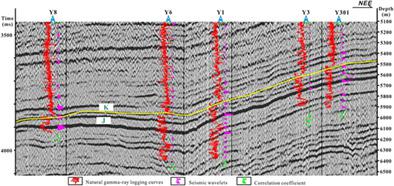当前位置:
X-MOL 学术
›
Geolog. J.
›
论文详情
Our official English website, www.x-mol.net, welcomes your feedback! (Note: you will need to create a separate account there.)
New insights on the petroleum migration and accumulation in the basal conglomerate reservoir of Cretaceous Qingshuihe Formation of Yongjin area, Central Junggar Basin
Geological Journal ( IF 1.8 ) Pub Date : 2021-06-03 , DOI: 10.1002/gj.4192 Yue Wang 1 , Xiangchun Chang 1, 2 , Zhongquan Liu 3 , Bingbing Shi 1 , Pengfei Zhang 1 , Youde Xu 3
Geological Journal ( IF 1.8 ) Pub Date : 2021-06-03 , DOI: 10.1002/gj.4192 Yue Wang 1 , Xiangchun Chang 1, 2 , Zhongquan Liu 3 , Bingbing Shi 1 , Pengfei Zhang 1 , Youde Xu 3
Affiliation

|
The Junggar Basin is one of the largest and most petroliferous superimposed petroleum basins in China. This study focussed on the characteristics of the unconformity between the Jurassic and Cretaceous (J/K) and its influence on hydrocarbon accumulation in the Yongjin area, Junggar Basin. Based on the seismic reflection characteristics and wireline well logging response, we identified the structure of the unconformity, which consists of three layers: the basal conglomerate layer, weathered clay layer, and semi-leached layer. Geochemical studies show that the crude oils of the Lower Cretaceous Qingshuihe (K1q) Formation in the Yongjin area are mainly derived from Permian source rocks and partly from Cretaceous source rocks. The abnormally high value of acoustic time and the low value of resistivity of mudstone indicate that the overpressure condition is pervasive in the Yongjin area and may act as the driving force for the vertical migration of hydrocarbon-containing palaeo-fluids. The poor sealing ability of the weathered clay layer of the unconformity between the Jurassic and Cretaceous (J/K) and the high abnormal overpressure indicate that the petroleum from Permian source rocks may break through the sealing of the weathered clay layer and migrate upward to the Cretaceous conglomerate to accumulate. In addition, the combination of faults, sheet sand bodies, and unconformities constitutes a three-dimensional petroleum migration pathway. The evolution of the Che-Mo palaeo-uplift also affected the formation of source rocks and petroleum migration. Accordingly, the hydrocarbon accumulation model of the Cretaceous in the Yongjin area indicated that Late Palaeogene is the first accumulation period. Permian source rocks have entered a mature to high-mature stage, where a large amount of generated oil and gas migrated along faults and unconformities and accumulated in the braided river channel sand bodies of the K1q Formation. The second accumulation period was the Neogene. The basin experienced a regional tilt leading to a south-inclined stratum. The oil and gas migrated upwards along the Late Hercynian deep reverse fault (Carboniferous–Permian) and then passed through the shallow faults and migrated to the bottom sandstone of Cretaceous reservoirs.
更新日期:2021-06-03


























 京公网安备 11010802027423号
京公网安备 11010802027423号